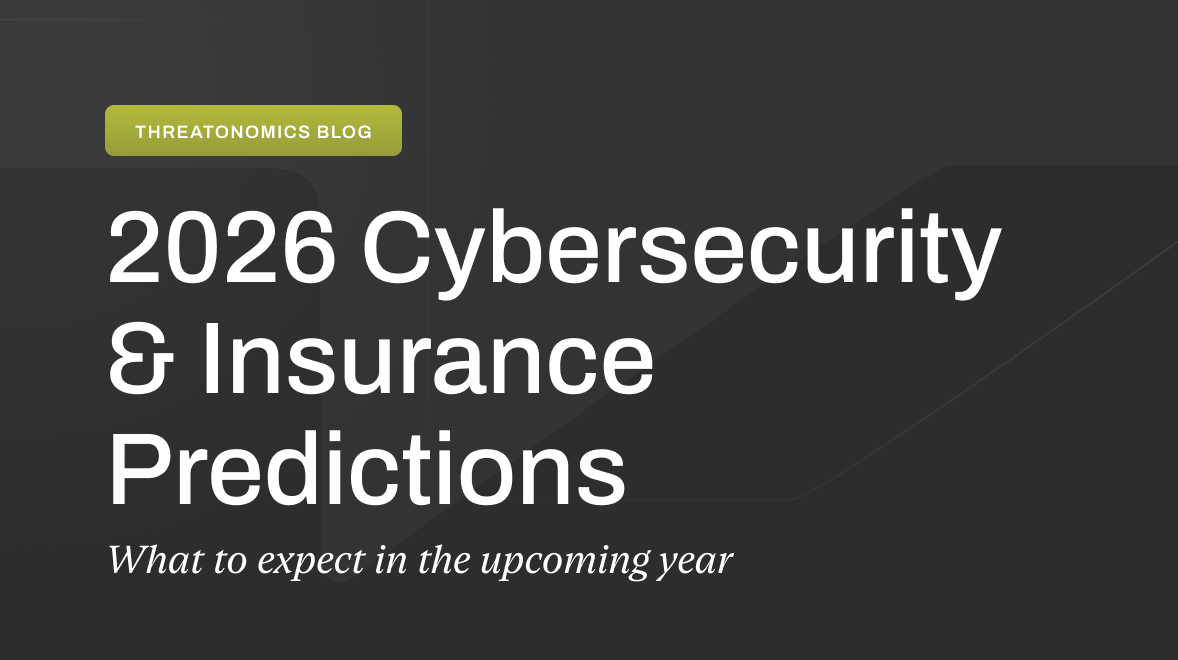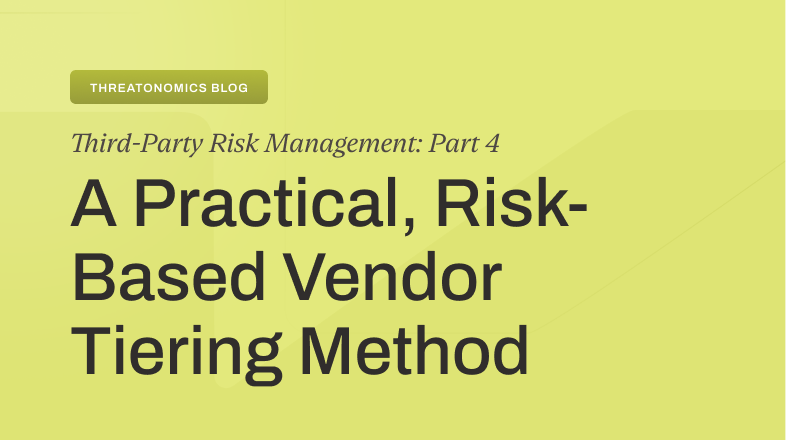The role of cyber insurance has evolved beyond a mere option to a critical element in the arsenal of comprehensive cyber risk management strategies. With the advent of increasingly complex cyber threats, the potential financial ramifications for companies have surged, positioning cyber insurance as a pivotal component in fortifying organizational cyber resilience.
Only 34% of organizations in the U.S. currently have a standalone cybersecurity insurance policy, indicating a significant unmet need. 43% of small and medium-sized enterprises (SMEs) in the U.S. have bought cyber insurance specifically to transfer the risks they face.
Understanding the strategic importance of cyber insurance underscores its role beyond immediate financial relief—it’s a foundational element that strengthens the overall defensive capabilities of an organization. Highlighting these aspects reveals the essential function of cyber insurance as a fundamental component of sensible risk management practices, cementing its status as a significant investment in any business’s security infrastructure.
What is Cyber Insurance?
Cyber insurance mitigates financial losses from various cyber incidents, including data breaches, business interruption, and network damage. It is a risk transfer from the business to the insurance provider, offering a financial safety net when security breaches occur.
Cyber insurance’s criticality shines as cybersecurity threats advance and the stakes for businesses rise with each incident. Due to these risks, defenses are more than just necessary; they are imperative for financial stability. Cyber insurance is a substantial buffer, mitigating the potential economic fallout from breaches and attacks.
This relationship between comprehensive risk management strategies and cyber insurance forms a cohesive protective approach. It’s not merely about recovery; it’s about fostering a proactive stance that cultivates resilience against vulnerabilities in our technological systems.
Policies typically cover the costs associated with recovery, including legal fees, notification costs, and losses from interrupted business operations. Moreover, cyber insurance often extends to cover regulatory fines and ransom payments, which are becoming increasingly common in cyber extortion cases.
Cyber insurance plays a pivotal role in the broader context of organizational risk management. It complements traditional cybersecurity measures by providing financial resources that help businesses recover from cyber incidents.
The strategic value of cyber insurance lies in its dual role: it acts as a reactive tool, helping businesses cope with the financial aftermath of cyber incidents, and as a proactive measure that encourages companies to adopt more stringent cybersecurity protocols. Insurers often provide reduced premiums for businesses with solid cybersecurity practices, incentivizing firms to strengthen their cyber defenses.
Optimizing Cyber Insurance for Effective Risk Management
Implementing cyber insurance effectively requires an in-depth understanding of an organization’s specific cyber risk profile and a keen assessment of the coverage limits and suitability of the insurance policies. Coverage should meet a business’ operational needs and align well with its financial capacity and risk tolerance.
This collaborative process should define the full scope of potential risks—ranging from data breaches to IT infrastructure damage—and meticulously align these with the coverage limits, terms, and conditions provided by the insurance policy. Such alignment helps ensure that the financial protection provided by the policy is balanced against the premium costs and deductibles, making it economically viable while enhancing the organization’s cybersecurity posture through best-practice security measures.
Exploring Coverage Options
First-party coverage: It addresses direct losses to the business, such as data recovery costs, business interruption losses, and crisis management expenses.
Third-party coverage: Focuses on liabilities from effects on other parties, such as data breach claims involving customer information. For comprehensive protection, businesses must understand the terms, conditions, exclusions, and deductibles.
Customizing Policies to Fit Business Needs
Industry-Specific Customization: Recognizes the distinct risks across various sectors, necessitating policies tailored to the unique needs of each business.
Tailored Endorsements and Riders: Insurers provide additional options to address particular vulnerabilities, such as cyber extortion defense and credit monitoring offerings.
Collaborative Risk Assessment: Encourages partnership with brokers or agents to craft policies that reflect a company’s risk profile.
In-Depth Risk Profile Analysis: Demands a thorough examination of the company’s potential cyber risks, exposure levels, and sector-specific regulatory mandates for optimal policy structuring.
Assessing Policy Limits and Deductibles
Balanced Policy Limits and Deductibles: Emphasizes selecting suitable policy parameters to harmonize protection levels with premium expenses.
Affordable Deductible Selection: Advocates for choosing deductibles that remain within the company’s financial comfort zone, ensuring readiness for potential claims.
Financial Capacity and Risk Tolerance Assessment: Encourages a comprehensive evaluation of a company’s fiscal strength and risk appetite to tailor insurance coverage, considering the organization’s economic stability and hypothetical loss scenarios
Navigating the Financial Impacts of Cyber Threats
The financial impact of cyber threats extends far beyond the immediate costs of data loss. Companies face many direct costs, including, but not limited to, forensic investigation expenses, public relations efforts to mitigate reputational damage, and operational downtimes, which all contribute to substantial financial burdens. Indirect costs include increased insurance premiums post-incident, loss of customer trust and loyalty, and long-term brand damage, which can affect a company for years following an incident.
Understanding and quantifying cyber risks is essential in selecting and shaping the right cyber insurance policy. Businesses must comprehensively evaluate cyber threats’ potential impact on their operations. Analyzing historical data on cyber incidents, understanding industry trends, and assessing the potential impact of various cyber scenarios on financial health are essential tasks.
Such a detailed risk assessment helps choose insurance limits that adequately cover possible losses, ensuring that the business is not vulnerable to unexpected financial strains. Companies should integrate cyber insurance into their financial strategies as a critical risk management tool. It provides a buffer against the volatility of cyber threats and allows companies to manage their risk appetite more effectively.
By transferring some financial risks to insurers, companies can stabilize their financial planning processes and allocate resources more effectively toward growth and operational improvements. Cyber insurance also plays a role in corporate governance by ensuring stakeholders actively manage cyber risks and comply with regulatory requirements.
Harmonizing Cyber Insurance with Cybersecurity Efforts
To maximize the benefits of cyber insurance, it should be part of a broader cybersecurity strategy, not a standalone solution. Integrating cyber insurance with existing cybersecurity efforts means ensuring that the measures covered by the insurance policy are in sync with the company’s overall security protocols.
This integration helps businesses respond to cyber incidents more effectively and prevent potential breaches by adhering to the security standards required by insurers. Such standards often include the implementation of robust firewalls, intrusion detection systems, and regular cybersecurity audits.
Cyber insurance providers often contribute valuable expertise and resources that can significantly enhance an organization’s cybersecurity posture. Many insurers offer complementary risk assessment services, employee cybersecurity training, and access to cutting-edge security technologies as part of their policies.
Utilizing these services can strengthen a company’s defenses against cyber threats and reduce the likelihood of a claim. This proactive approach protects the organization and lowers insurance premiums, as insurers may offer discounts to businesses that demonstrate strong cybersecurity measures.
The Impact of Cyber Insurance on Cybersecurity Investment
While cyber insurance provides necessary financial coverage, it should also influence a company’s investment in cybersecurity. Businesses can better allocate their cybersecurity budgets by understanding the coverage details and the areas of potential risk exposure highlighted through the insurance process.
Investing in enhanced security measures can decrease the likelihood of breaches and, consequently, the need to rely on insurance payouts. This strategy optimizes ROI in cybersecurity and minimizes cyber risk exposure.
Evaluating Risk Before Insurance Investment
Investing in cyber insurance should be based on a comprehensive evaluation of the business’s specific cyber risks and their potential impacts. This evaluation should consider the nature of the data handled by the company, the cybersecurity measures already in place, and the business’s overall risk tolerance. Understanding these factors helps define the scope of necessary coverage and supports informed decision-making regarding the purchase of cyber insurance.
The cyber insurance market offers various products with different terms, conditions, and costs. Businesses should conduct thorough market research to identify the most suitable options available. This process often involves comparing quotes from multiple insurers, reviewing the terms of coverage provided, and assessing the insurer’s reputation and financial stability. Consulting with specialized insurance brokers who understand the nuances of cyber risks can also provide valuable insights and help businesses choose the best policy.
Cyber insurance should align with the company’s business objectives and risk management strategy. This alignment ensures that the insurance coverage supports the company’s goals and provides adequate protection without unnecessary overlap with existing measures or policies.
Regular reviews and updates to the cyber insurance policy are necessary to keep up with the cyber threats and the changing needs of the business. This approach helps maintain an effective balance between risk transfer through insurance and risk mitigation through proactive cybersecurity measures.
Balancing Risk Transfer with Risk Acceptance
In cyber risk management, not all risks can be—or should be—transferred to an insurance provider. Some risks might be too trivial to insure, while others could be so catastrophic that they are uninsurable.
Companies must carefully evaluate which risks to transfer through insurance and which to retain. Managers should base this decision on a strategic assessment of potential risks, assess their likelihood, and the impact they could have on the business.
Effective risk management involves a strategic mix of risk transfer and risk acceptance. Cyber insurance is critical for covering significant but not extreme risks. By transferring these moderate but potentially costly risks to an insurer, companies can focus on managing more predictable, minor risks and strategic initiatives that drive business growth.
Risk acceptance is an integral part of a holistic cyber risk management strategy. It involves acknowledging and preparing for those risks that are either too small to insure or too large and rare to be cost-effectively covered by insurance.
This approach requires a clear understanding of the business’s risk appetite and a commitment to maintaining sufficient reserves or contingency plans to handle potential impacts. By balancing risk transfer with risk acceptance, companies can ensure they are not overly reliant on insurance while protecting themselves against significant financial losses.
Connecting Cyber Insurance with Other Risk Management Facets
Cyber insurance should seamlessly integrate with the organization’s overall risk management strategies. This integration ensures that all aspects of risk—whether related to cyber threats, physical security, or operational risks—are managed in a coordinated and comprehensive manner. Regular communication between the risk management team and the cyber insurance provider is crucial to aligning strategies and ensuring coverage.
By connecting cyber insurance with other risk management practices, businesses can enhance their resilience against various threats. This integrated approach not only helps in managing cyber risks more effectively but also strengthens the organization’s ability to respond to and recover from various incidents. It promotes a culture of risk awareness and preparedness across all levels of the organization, from the executive team to operational staff.
Companies can continually refine their risk management strategies by leveraging insights from previous incidents, current threat intelligence, and predictive analytics. This approach helps them avoid potential risks and ensures comprehensive asset and operations protection.
Integrating Cyber Insurance into Your Risk Management Strategy
Navigating the complexities of cyber threats requires an approach where cyber insurance plays a vital role. Businesses should treat cyber insurance as more than just a financial buffer; it’s essential to integrate it into a comprehensive risk management strategy that emphasizes preventative measures alongside strategic risk mitigation.
Embracing a thorough understanding of cyber risks and the protective options available is key to navigating these challenges successfully. To take the first step towards bolstering your organization’s cyber defenses, we invite you to request a demo today.

Stay ahead of cyber risk with the latest intel on threats, best practices, and more.
Sign up for our Threatonomics newsletter to get the latest insights from our experts in cybersecurity, insurance, and risk management; all you need to achieve Cyber Resilience.
Subscribe







